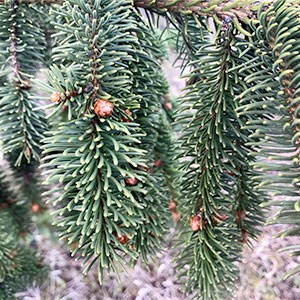Facts:
Researchers in the project
- Anna Berlin
- Malin Elfstrand
- Jonas Oliva
- Johanna Boberg
Project duration: 2017-2019
Financed by FORMAS

In this project, we study the ecological mechanisms contributing to the assembly of a tree’s microbiome. The project will reveal host traits correlated with pathogen susceptibility relevant for future tree breeding.
The aim of the project is to study the ecological mechanisms contributing to the assembly of a tree’s microbiome and whether the assembly of endophytic and pathogenic foliar fungi depends on the host genotype, its phenotypic traits, or the stand or landscape context. We expect that the genotypic traits of the host tree will act as a ‘habitat filter’, and that this mechanism will contribute more to the assembly of species colonising tree foliage than the environment and ‘species chance of arrival’.
Taking advantage of established seed orchards of Norway spruce in Southern Sweden with replicated genotyped and phenotyped clones in different locations this hypothesis will be addressed across different spatial scales. Changes in the assembly of foliar fungi, and species incidence in the phyllosphere and in the airborne spore community will be determined using a molecular approach, i.e. high through-put sequencing and quantitative PCR.
The project will not only strengthen our knowledge about ecological mechanisms behind fungal establishment in tree foliage, but will also reveal host traits correlated with pathogen susceptibility relevant for future tree breeding. This is highly relevant in light of anticipated increase in disturbance to forest ecosystems in the future and the subsequent need to develop efficient management strategies.
Project duration: 2017-2019
Financed by FORMAS
anna.berlin@slu.se, 018-671579